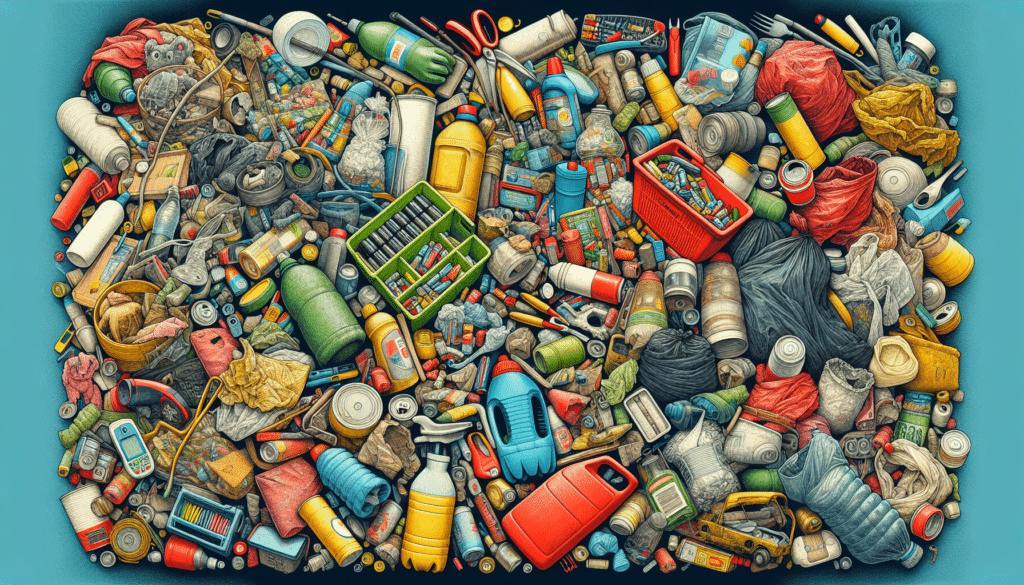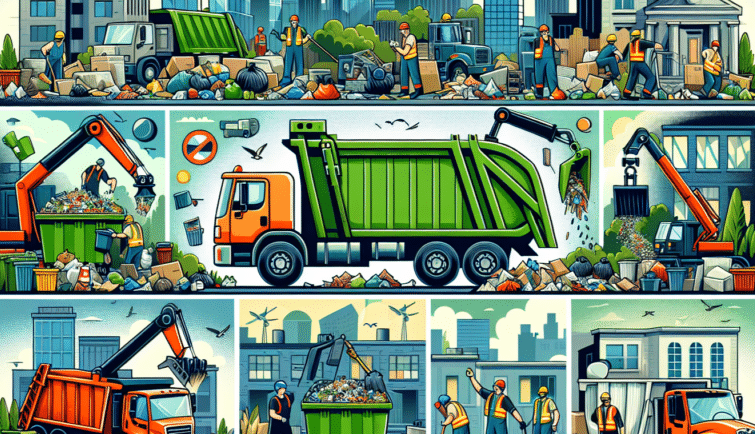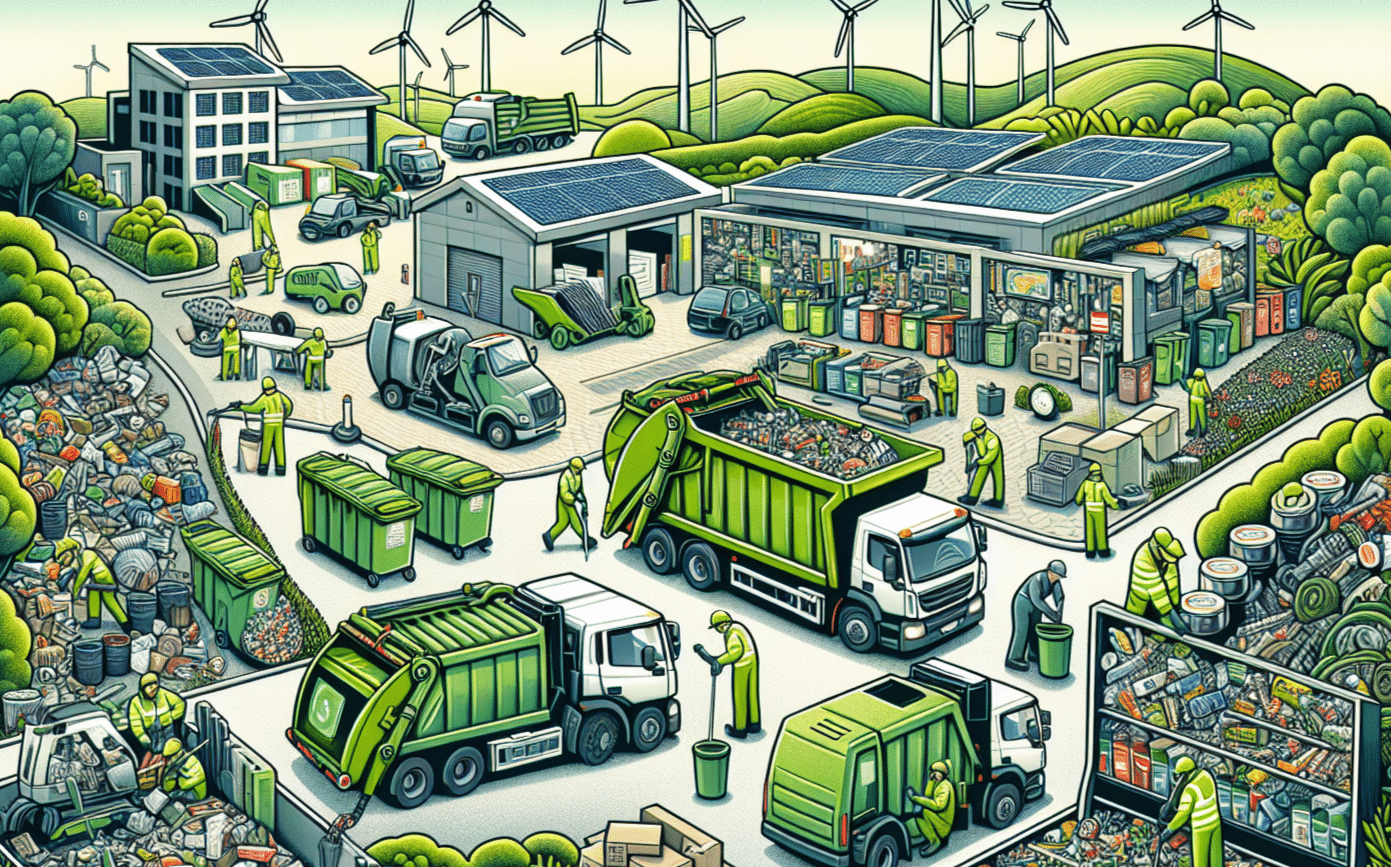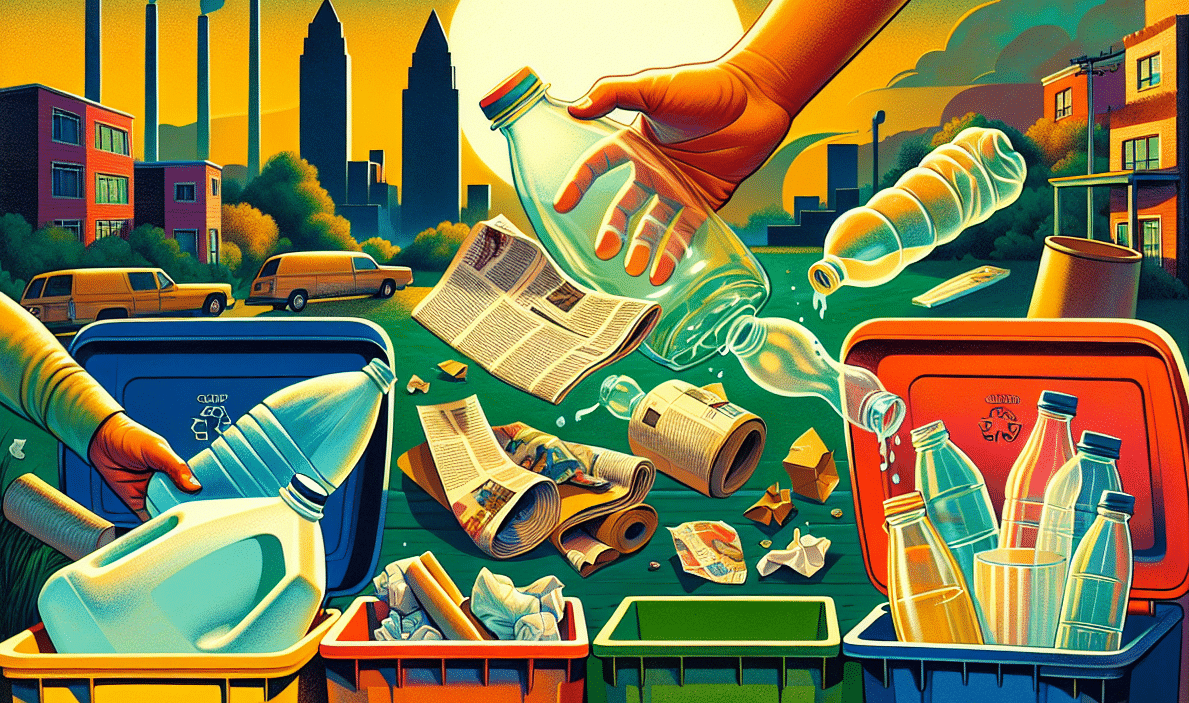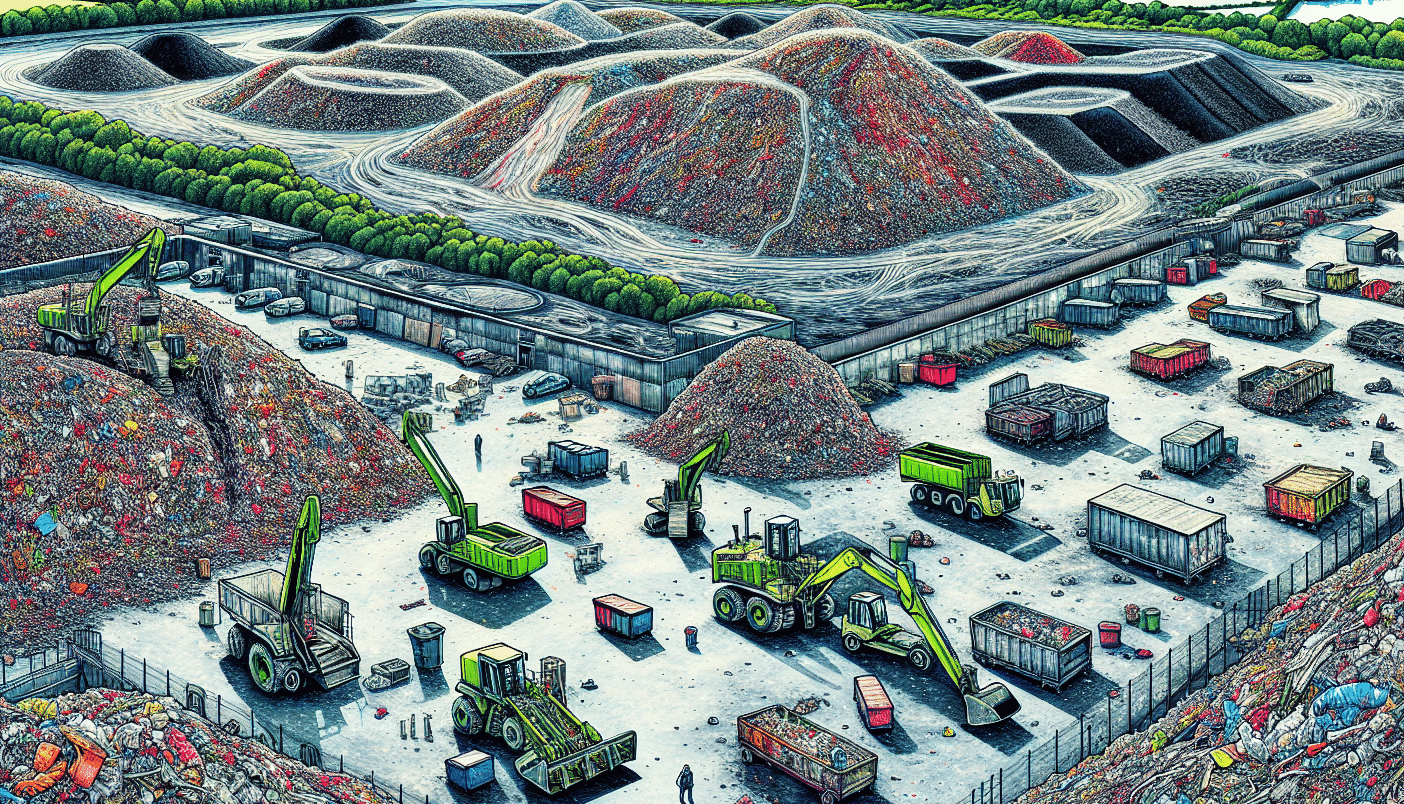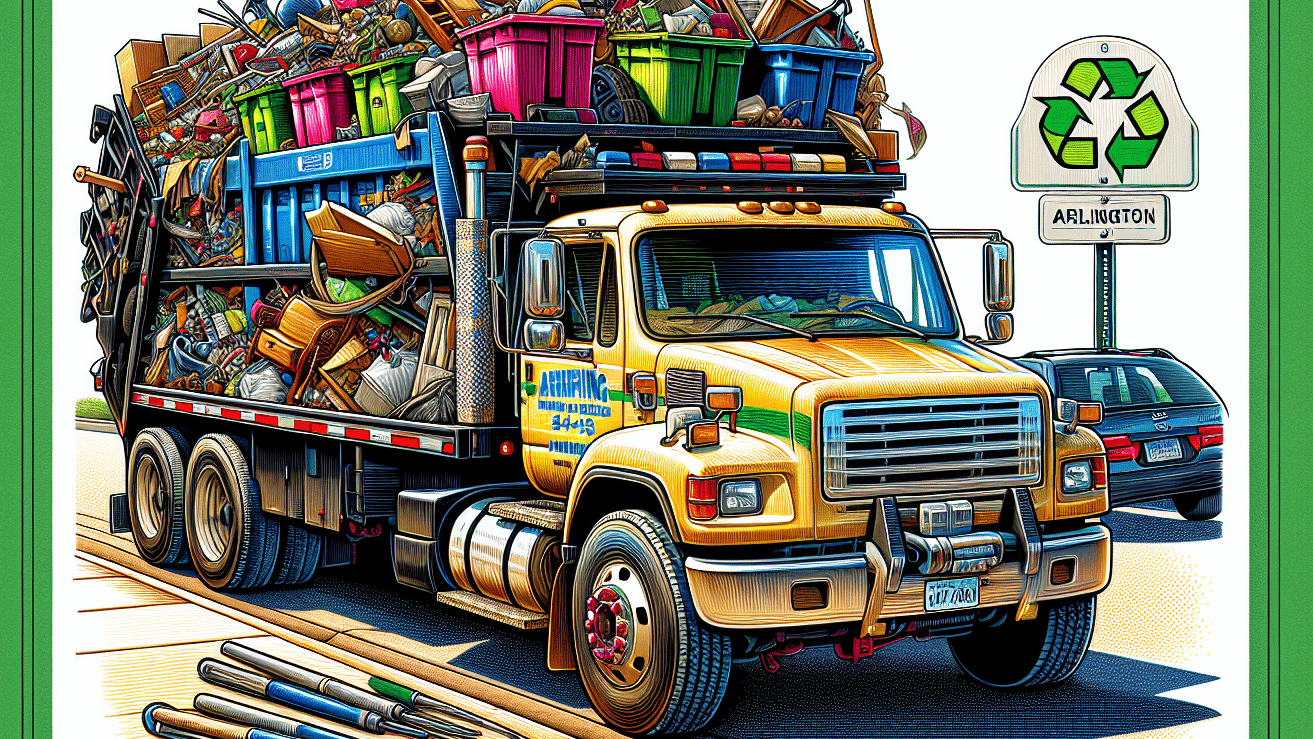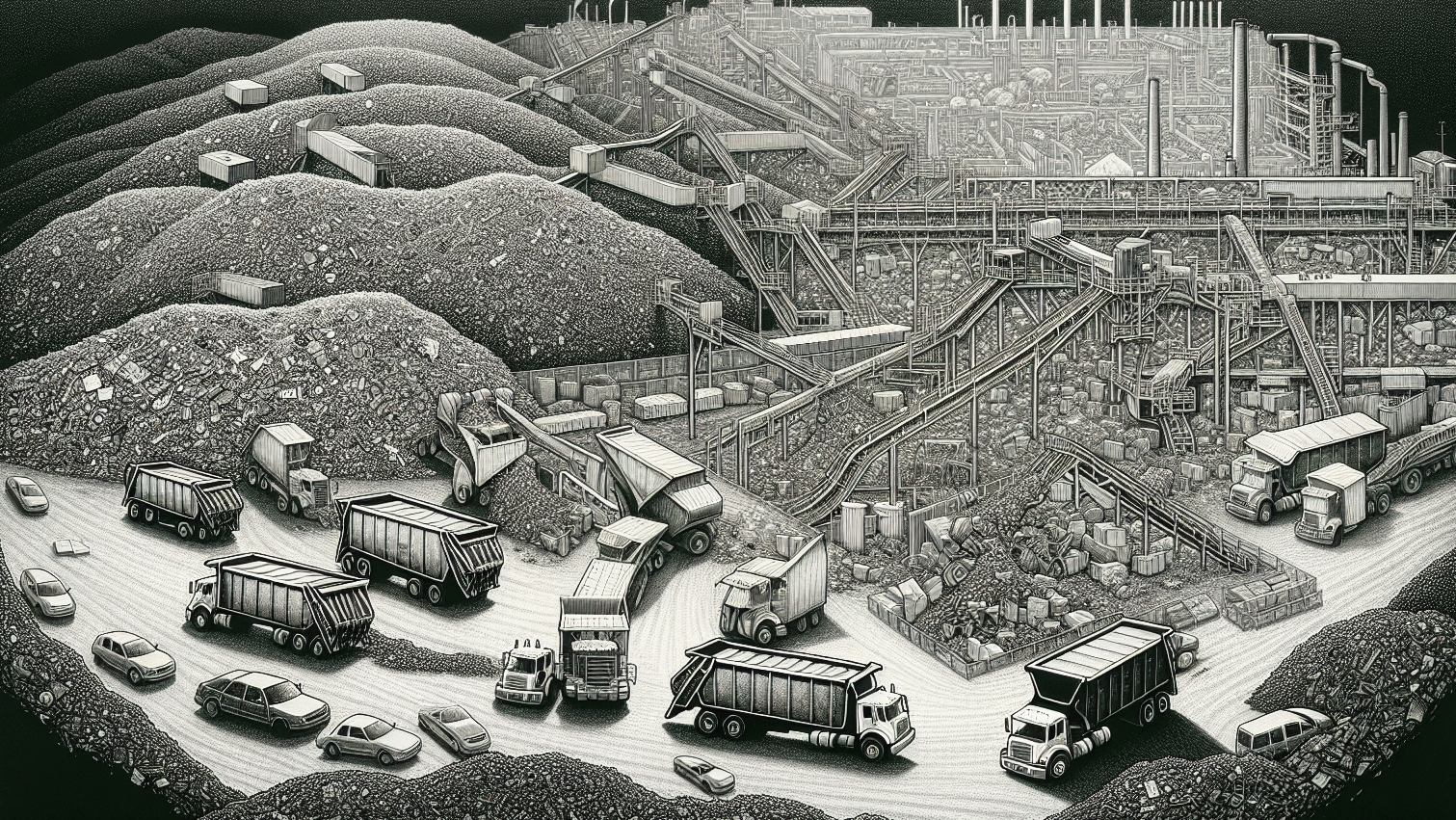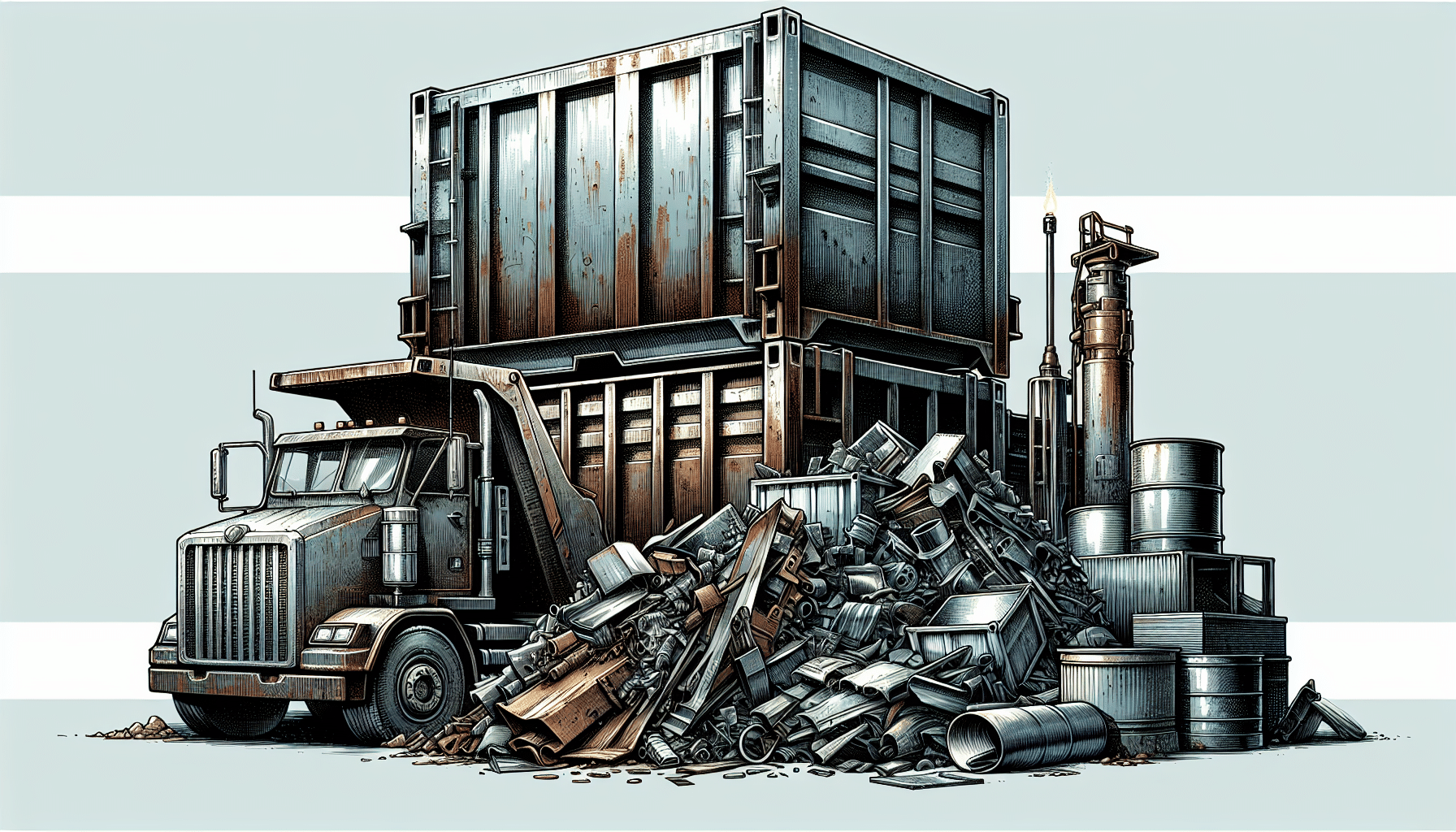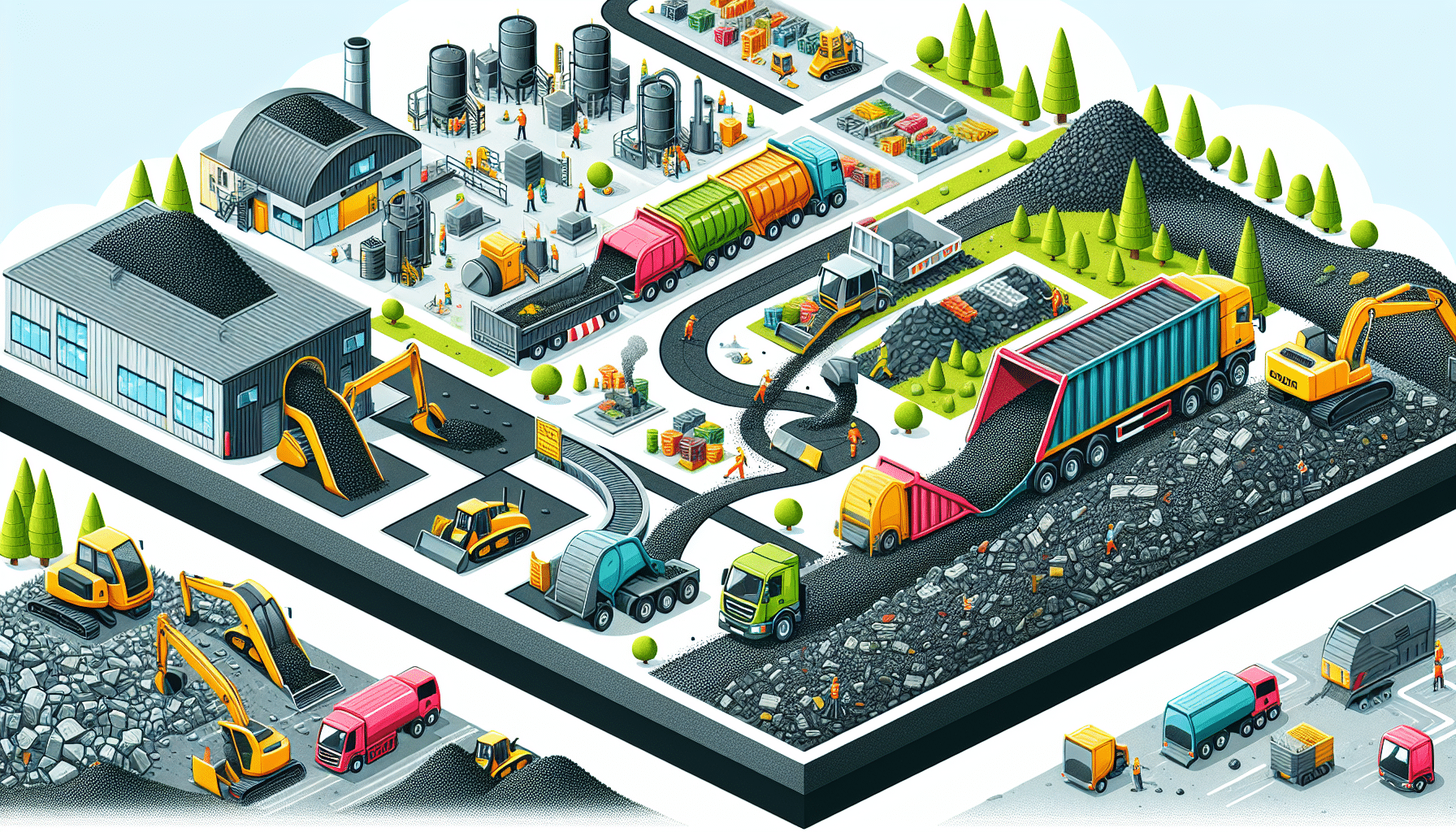Household waste poses a growing concern for both our health and the environment. From regular trash to hazardous materials, understanding the proper disposal and reduction techniques is essential. This article explores various effective ways to manage your waste, minimize the environmental impact, and take steps toward a more sustainable future.
Key Takeaways
- Household hazardous waste (HHW) requires appropriate identification and disposal techniques to minimize environmental and health impacts. This article highlights the dangers of improper disposal such as chemical leaks, fires, and public health risks.
- Local governments, community-supported facilities, and pick-up services play a pivotal role in managing household waste through organized collections, recycling programs, and public education to ensure safe disposal and reduce contamination.
- Reducing waste generation at the source via mindful consumption, reusing items, and proper recycling practices are key strategies for households to help protect the environment and minimize waste impact on landfills.
Understanding Household Waste
Every year, an astounding amount of waste is generated at the household level. From packaging materials, organic and inorganic waste, household appliances, to consumer goods, the list is endless. While some of these are non-hazardous, others like batteries and household cleaners classify as hazardous materials, requiring careful handling and disposal to prevent harm to the environment and public health.
The amount of waste a household generates can be influenced by various factors such as income and lifestyle. Understanding the journey of residential waste, identifying hazardous materials, and learning about the risks of improper disposal is crucial.
Identifying Hazardous Materials
Many common household items, though seemingly innocuous, can contain hazardous materials. Some examples include furniture polishes, automotive products, aerosol cans, and flammable substances such as kerosene. The proper identification and disposal of these materials is a critical step in minimizing their environmental impact and maintaining personal and environmental safety.
The Journey of Residential Waste
The advent of technology has made the disposal of household waste a more efficient process. Smart waste management systems are revolutionizing the collection and processing of household waste. These systems help to identify the most suitable method for disposal, be it recycling, treatment, or secure landfilling, depending on the waste’s characteristics and potential environmental impact. This optimized approach not only reduces the burden on landfills but also prevents the release of harmful substances into the environment due to improper disposal.
The Risks of Improper Disposal
The dangers of improper disposal of household waste are far-reaching and can impact both our health and the environment. For instance, sanitation workers who handle waste are exposed to health risks like respiratory problems, infectious diseases, gastrointestinal issues, muscle pain, and fatigue. Hazardous materials such as lead and mercury can also leach into the environment from landfills causing severe risks to ecosystems.
Landfills, additionally, can produce methane, a highly flammable gas, leading to dangerous fires or explosions, posing significant health risks to nearby residents and workers. The potential dangers from improper disposal underline the importance of proper disposal of household hazardous waste, which includes not pouring them down drains or on the ground, or placing them in the regular trash.
Safe Disposal of Hazardous Household Products
Our homes are filled with a variety of products that, though useful, contain hazardous materials and toxic chemicals. These include common items like cleaning solvents, paints, pesticides, motor oil, and batteries. These products could be flammable, reactive, explosive, corrosive, or toxic, making it necessary to dispose of them properly. One effective method of disposal is through household chemical collections. These provide a safe disposal channel for such hazardous items, ensuring they are handled responsibly and do not end up causing harm to the environment or public health.
Finding HHW Collection Sites Near Me
Finding a hazardous waste collection site near you is easier than you think. The Earth 911 database, for instance, helps individuals locate nearby collection sites by simply searching ‘household hazardous waste’ along with their zip code. Local environmental, health, or solid waste agencies offer valuable information regarding permanent or periodic hazardous waste collections.
In areas that lack permanent facilities, residents can make use of designated days for hazardous waste collection at a central location or attend periodic collection events. These collection sites and events are crucial in ensuring the safe and proper disposal of hazardous items.
Best Practices for Hazardous Waste Management
Managing hazardous household waste requires meticulous care. It is recommended to adhere to product label instructions for hazardous products visible and to store them properly to avoid potential risks and ensure proper usage. Mixing different types of hazardous waste should be strictly avoided due to the potential for dangerous reactions when you mix chemicals, which could result in ignition or explosion, and may even render the components unrecyclable. Disposal, too, should follow the directions on the product label to mitigate risks of hazards like explosions or leaks during transportation.
The Role of Local Governments in Waste Management
Local governments play a key role in managing household waste. Local governments are responsible for organizing diverse waste collection systems, including curbside pick-up or recycling programs, which can vary greatly between different cities. They also manage safe waste disposal by operating and overseeing landfills and incineration facilities, and implementing advanced waste treatment technologies. Recognizing the need for collaborative efforts, municipal governments often work with other stakeholders for effective and reliable waste management practices.
Community-Supported HHW Facilities
Community-supported hazardous waste facilities play a significant role in managing household waste. Local governments are responsible for managing these facilities and reporting their operations to state environmental agencies. To promote safe disposal of household hazardous wastes, communities often organize designated collection days, allowing residents to dispose of hazardous waste responsibly at a central location. These facilities are geared towards handling hazardous materials, helping to ensure their safe disposal and preventing them from entering the regular waste stream where they could pose risks to sanitation workers and the environment.
Encouraging Household Participation
Local governments actively encourage households to participate in sustainable waste management practices. They use initiatives and programs to encourage such practices among residents. To ensure active household participation, local governments collaborate with various stakeholders, including haulers and materials processors, to reform waste management policies.
Reducing Household Waste at the Source
One of the most effective ways to manage waste is to reduce it at the source. This concept of source reduction or waste prevention focuses on eliminating waste before it occurs by optimizing the design, manufacture, purchase, or use of materials and products. Households can play a significant role in this by adopting certain waste management practices. Donating unused items, avoiding single-use plastics, choosing environmentally-friendly products, purchasing loose fruits and vegetables over packaged ones, using refillable containers, and practicing home composting to handle organic waste are all ways in which households can help minimize waste. These measures not only reduce the burden on landfills but can also lead to significant financial savings.
Mindful Consumption and Waste Reduction
Mindful consumption is a vital strategy for waste reduction. Here are some ways to practice mindful consumption and reduce waste:
- Purchase items in bulk or concentrated forms.
- Select high-quality and durable products.
- Purchasing items with minimal packaging.
Habits such as signing up for paperless billing, purchasing second-hand clothing, and favoring long-lasting goods over disposable ones also support waste reduction efforts. By making these small yet significant changes in our daily lives, we can contribute to a significant reduction in household waste.
Reuse Strategies for Everyday Items
Another effective strategy to reduce waste is to reuse items. Simple acts, such as repurposing old jars and containers for storage or decoration, can prolong the utility of these items and prevent them from entering the waste stream.
Recycling Done Right
Proper recycling is an essential part of waste management. This involves ensuring materials are clean, separating different types of recyclables, and understanding local recycling rules to prevent contamination. Households can minimize waste creation by avoiding the use of plastic bags, ensuring recyclables are clean, empty, and dry, and by not including non-recyclable items in recycling bins. By practicing recycling the right way, we can contribute to a cleaner and healthier environment.
Protecting Our Environment and Health
The disposal of hazardous household waste can significantly impact our environment and health. Local governments in the United States have enhanced the sustainability of waste management services through the introduction of curbside recycling programs and development of facilities designed to capture greenhouse gasses from landfills. However, there are still communities that suffer from non-existent, partial, or insufficient household waste collection, which are directly impacted by inadequate waste management.
The Impact of Hazardous Wastes on Ecosystems
Hazardous waste has a significant impact on ecosystems. It can cause:
- Release of pollutants that are absorbed by aquatic life.
- Accumulation of pollutants in sediments.
- Harmful effects on fish health and populations.
- Local habitat degradation.
Marine and coastal ecosystems are impaired by hazardous waste substances like PCBs, dioxins, PAHs, and heavy metals. These substances originate often from industrial activities and the improper disposal of the hazardous materials used. Even bird migration patterns can be disrupted by landfill sites, leading to birds ingesting hazardous substances and changing their migratory behaviors.
Health Risks Associated with Waste Exposure
Exposure to waste, especially hazardous waste, can pose serious health risks. Mismanagement of hazardous waste can increase the risk of health issues, including various types of cancers, asthma, and congenital anomalies. Individuals living near waste disposal sites may have higher risks for health complications such as cancers, chronic liver diseases, and circulatory diseases.
Children and adolescents near waste sites experience higher rates of hospitalization for leukemia, asthma, and respiratory diseases. There is even a higher rate of preterm births observed amongst infants whose mothers live in the vicinity of hazardous waste sites.
Sanitation workers, especially waste pickers, face the following health hazards due to exposure to hazardous waste:
- Airway inflammation
- Glucan exposure
- Increased incidences of accidents
- Musculoskeletal problems
These health hazards highlight the need for stringent safety measures and protocols to protect these workers and families from hazardous waste exposure.
Navigating Toxic Waste Pick-up Services
Toxic waste pick-up services are designed to help residents dispose of hazardous materials, including toxic wastes, that cannot be thrown away with regular trash. These services ensure that dangerous materials are handled properly, protecting sanitation workers and the environment. They can include collecting a variety of items such as paints, solvents, and batteries.
Residents typically must schedule pick-ups in advance through a website or local waste management hotline. Proper packaging of materials, such as sealing containers and labeling them, is crucial for safe pick-up. Separating items and not overflowing the collection bins helps to ensure the safety of workers collecting the waste.
Utilizing Pick-Up Services for Hazardous Products
Residents can use the pick-up services offered by municipalities for the safe disposal of hazardous products such as used oil, electronics, and other chemicals. These services not only ensure the safe disposal of hazardous items but also provide convenience for residents, making waste management more accessible and effective.
What to Expect with Toxic Waste Pick-Up
Toxic waste pick-up services typically accept items such as batteries, paint, and household cleaners, but not business-related or industrial waste. Certain types of waste, such as medical waste and ammunition, are often not eligible for regular toxic waste pick-up services.
Before the pick-up, residents should:
- Separate hazardous waste from other trash.
- Keep hazardous waste in clearly marked containers to avoid accidents.
- Follow municipality guidelines, such as not mixing different types of hazardous wastes to prevent chemical reactions.
Residents can arrange the pick-up of toxic waste by contacting their municipal hazardous waste management service or by scheduling an appointment during a designated collection period.
Summary
The role we play in managing our household waste has far-reaching implications for our environment and health. From understanding the nature of household waste and identifying hazardous materials to learning about safe disposal techniques and the role of local governments, this article has explored various facets of waste management. This guide has also delved into strategies to reduce waste at the source, understood the impact of hazardous wastes on ecosystems and human health, and navigated toxic waste pick-up services.
Managing household waste efficiently and responsibly is necessary for personal and environmental safety. By adopting mindful consumption and waste reduction practices, reusing items, recycling properly, and utilizing pick-up services for hazardous products, we can significantly reduce our waste footprint. Let’s commit to making these changes today, for a cleaner and healthier tomorrow.
Frequently Asked Questions
What are some common hazardous materials found in households?
Common hazardous materials found in households include batteries, household cleaners, furniture polishes, automotive products, aerosol cans, kerosene, propane tanks, and lighter fluid.
How can I identify an HHW collection site near me?
You can identify an HHW collection site near you by using databases like Earth 911 and searching for “household hazardous waste” along with your zip code. Another option is to contact your local environmental, health, or solid waste agencies for information on permanent or periodic hazardous waste collections.
What are some best practices for managing hazardous waste?
The best practices for managing hazardous waste include adhering to label instructions for hazardous products, keeping products in original containers, avoiding mixing different types of waste, and following disposal directions on the product label.
How can local governments encourage household participation in waste management?
Local governments can encourage household participation in waste management by implementing initiatives, collaborating with stakeholders, and providing recycling bins while conducting public awareness campaigns. These actions can help promote sustainable waste management practices among residents.
What are some ways of reducing household waste at the source?
To reduce household waste at the source, consider donating unused items, avoiding single-use plastics, choosing environmentally-friendly products, opting for loose fruits and vegetables, using refillable containers, and practicing home composting.
